Mist hung around the hills and valleys north of Zagreb as we flew into the city’s modest but modern airport. The sun was shining, the temperature crisp.
We were in town for a December weekend break in 2018, to visit the award-winning Christmas markets and experience one of Europe’s lesser-known capitals. We found a city much influenced by its Austrian past, with an attractive old town, some fascinating museums and a population that knows how to celebrate Advent.
Sadly there was no snow to speak of as we dropped our bags at the Hotel Esplanade, a grand, old fashioned establishment that’s close to the train station and came in very handy for the wealthy Orient Express passengers who used to stay in times past. The hotel is also close to Trg kralja Tomislava, a large public square where we got our first taste of the Christmas markets and found a large ice rink laid out around a central fountain. Neighbouring squares and other streets in the heart of the city housed more stalls, stages and entertainments.
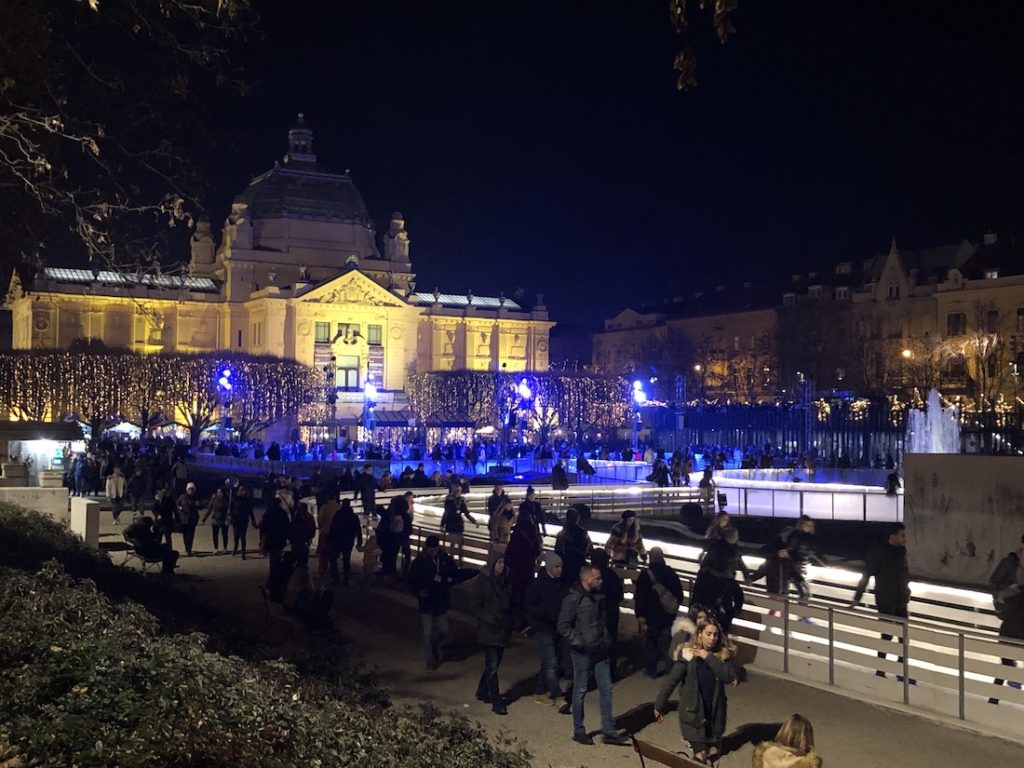
Zagreb won its festive award in a public vote so my expectations were high. In truth, I was a bit disappointed with what we found. There were plenty of stalls, bands played, festive lights blinked extravagantly and fake snow piled up on the pavements but most stalls were given over to food, and mostly the same old food. There were fewer craft stalls than we’ve seen in visits to other cities, but at least the people were friendly, many streets were closed off to traffic to make it much more pedestrian friendly and the bands were good (in part because they didn’t overdo the Christmas songs). We enjoyed the mulled wine and I found a craft beer or two amid the barrels of generic, international lager. Of an evening the city looked pretty, the streets heaved and everyone enjoyed themselves.
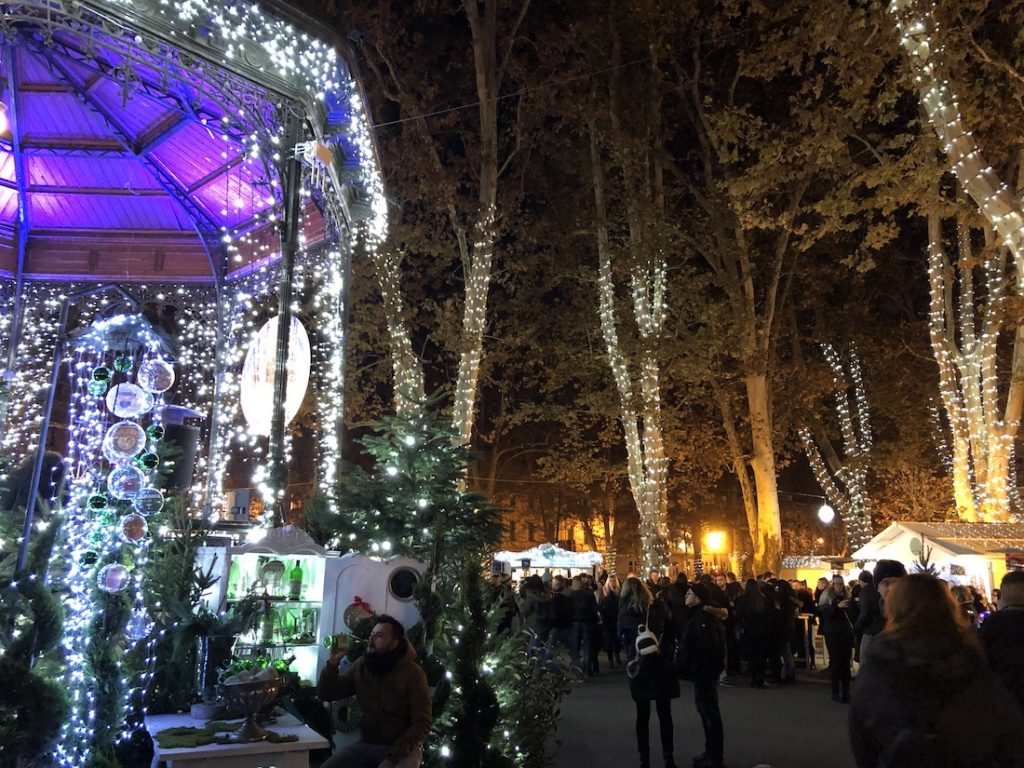
By day Zagreb’s bustling centre is a mixed bag. Grand mansion blocks and many older buildings betray the fact the city was part of the Austrian empire until the First World War. There’s a generous collection of buildings from the art nouveau period, sporting the extravagant flourishes for which the movement is famous. However, we didn’t have to look far to find unimaginative and ugly buildings from the latter half of the 20th century. And far too many buildings are showing signs of wear and tear, covered in mindless graffiti or with crumbling rendering. Perhaps some of the damage was caused during the Balkan Wars of the early 1990s.
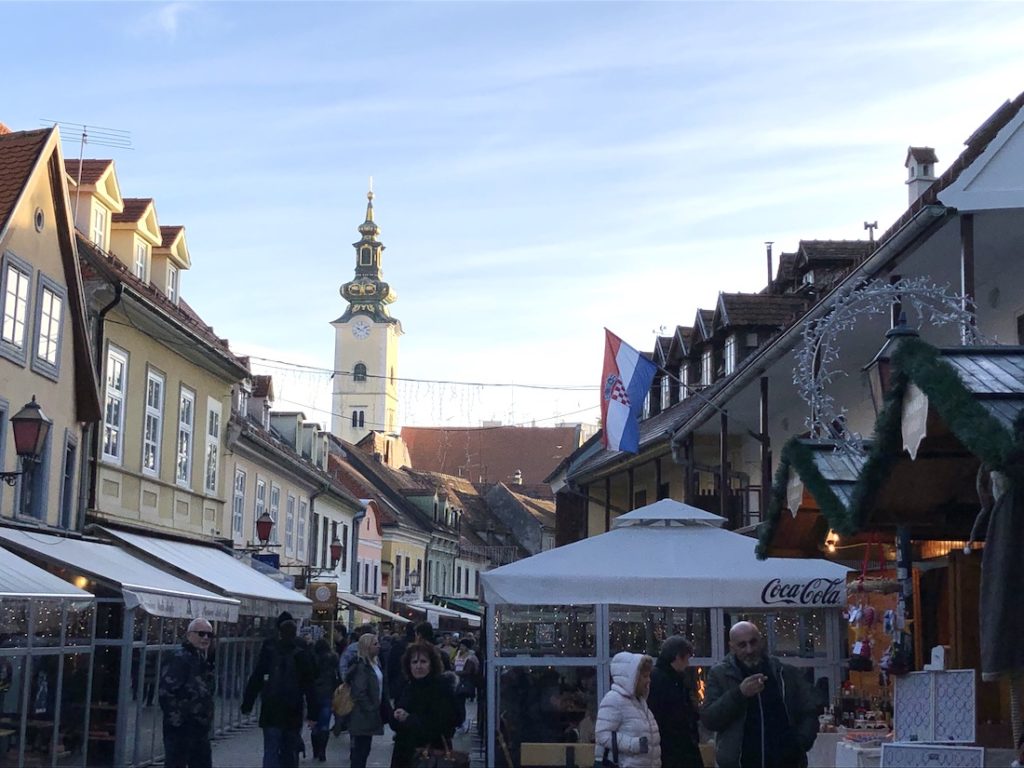
The oldest and most picturesque part of Zagreb is the Upper Town, made up of the districts of Gradec and Kaptol. We walked up to it (rather than taking the popular funicular) via the central Ban Jelacic square and the open-air market at Dolac, where stalls laden with fruit and veg provided a splash of colour on a grey winter’s day. Beyond lay the popular if touristy Tkalčićeva street, which was once a stream lined with mills but was paved over in the last century and became home to small shops and trades. Many of those old buildings survive and, as part of the Christmas celebrations, tableaux representing the old trades had been placed along the street for the Instagram generation. Cafes and bars have taken their place and their ugly awnings and furniture spoilt the look of the street.
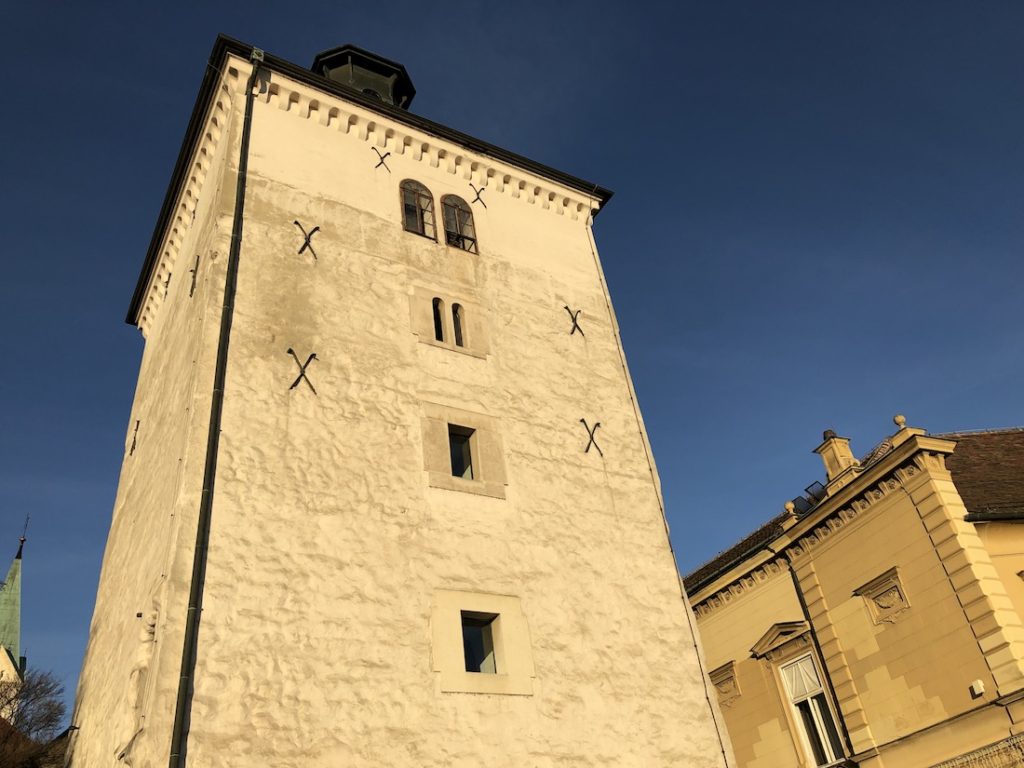
We climbed steps up to Gradec and walked through the Stone Gate into the heart of the old city. The gatehouse includes a curious shrine, where locals regularly pray in front of an image of Our Lady of the Stone Gate. This survived a fire in 1731 that destroyed a number of neighbouring buildings and thus earned a miraculous reputation. Superstitious nonsense or otherwise, some were trying to pray there while armies of tourists traipsed through led by tour guides waving brollies and sticks. The old town was quieter, largely free of traffic thanks to its quaint alleys and narrow streets, and was home to a number of stately government offices and historic buildings, one of its most famous being St Mark’s Church, which sports some colourful roof tiles in the style of St Stephen’s Cathedral in Vienna. Nearby is the excellent Museum of Broken Relationships and the chunky 13th century Lotrščak Tower, which formed part of the town’s centuries-old fortifications. Up on the observation deck we enjoyed good views of the city.
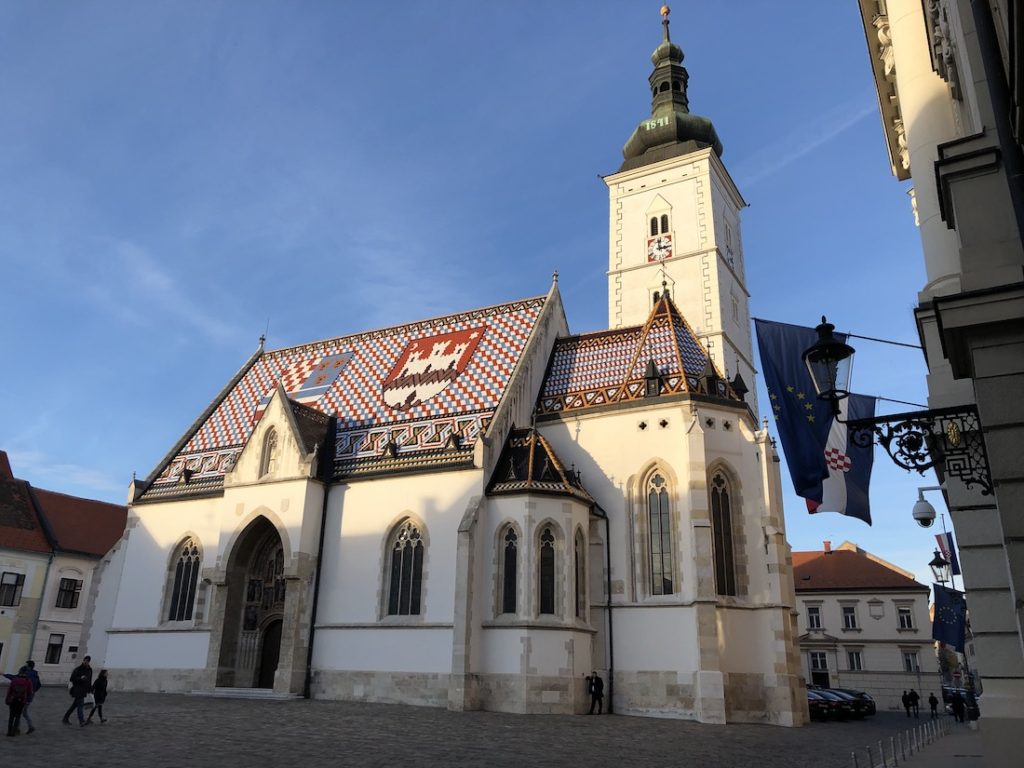
On the Sunday we took a walk past the (closed for winter) botanical gardens to explore some of the other parts of town, ending up at the cathedral. This has been the subject of ongoing renovations for years, largely because the sandstone used to build it erodes so easily, and scaffolding shrouded one of the towers. We continued on north, through a small park and the city’s suburbs to Mirogoj, which is home to what must surely be one of Europe’s most extravagant cemeteries. Fronted by a long arcade incorporating cupolas and other stylish, colourful architectural flourishes, locals of all religious persuasions are memorialised and buried in family plots from the 19th century to the present day. Quite a few locals were out tending the tombs, lighting candles and laying flowers, while outside a large collection of traders were busy flogging flowers, candles and other paraphernalia of death. The cemetery also features memorials to the nation’s war dead and the 153 people who died in a train crash in the city back in 1974. Back near the entrance lies the black, angular resting place of Croatia’s controversial president at the time of the Balkan Wars, Franjo Tudjman.
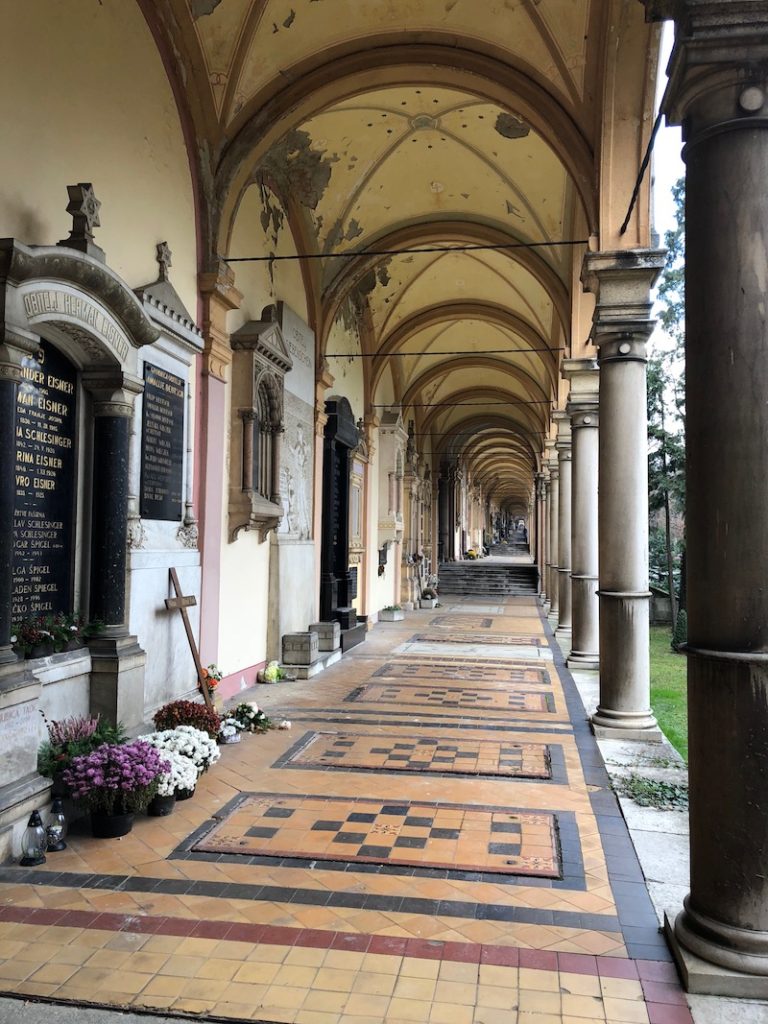
Our evenings were spent exploring the markets but we ate well in a part of the world that has an often deserved reputation for stodge. Lari & Penati was a small but modern restaurant with friendly staff, local wines and a modest contemporary menu. I couldn’t fault their cod pate and warm beef salad and the pinot noir was light and refreshing. Lanterna na Dolcu was more traditional but no less friendly, serving Croatian dishes inspired by recipes the owners found in a 19th century cookbook. I opted for a plate of local cheese and cured meats and a hearty, delicious main course of veal with gnocchi in a creamy mushroom sauce.
It may have been winter but the city centre’s bars and restaurants still had plenty of outdoor seating, offering blankets and heaters to help us stay warm. They were busy too, even though there was a real chill in the air. And at least sitting outside meant we could avoid the clouds of cigarette smoke that filled the bars, stung the eyes and tainted our clothes. I was surprised that in 2018 there were European countries where smoking was still a popular habit. I endured it at a bar called Vinyl in part because the DJ played some cool, older sounds and the craft pale ale, from a microbrewery called Grif, was excellent.
We left the city on a sunny but cold Monday morning, sure in the knowledge that, as far as Christmas Markets go, we’ll find better, but only just.

